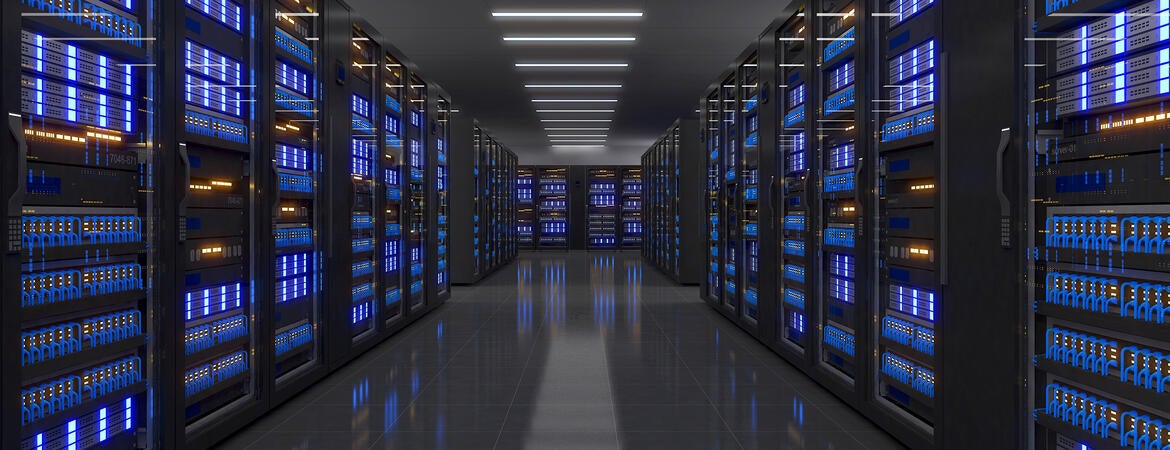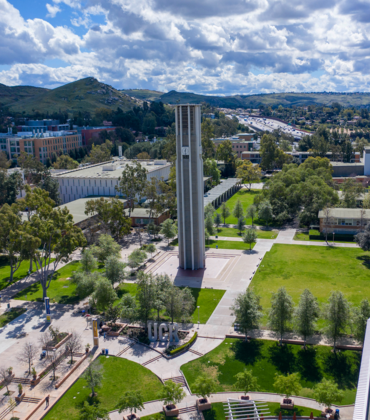
As artificial intelligence becomes more powerful and widespread, so does the environmental cost of running it.
Behind every chatbot, image generator, and television streaming recommendation are massive banks of millions of computers housed in an increasing number of data centers that consume staggering amounts of electricity and water to keep their machines cool. Most of that electricity is still produced by fossil fuel-burning power plants, which contribute directly to air pollution and climate change.
A study from UC Riverside’s Marlan and Rosemary Bourns College of Engineering, however, proposes a solution to this growing problem. It outlines a method to dramatically reduce the pollution caused by AI processing in large data centers—while also extending the life of the hardware doing the work. No existing system combines these two goals, say the authors, professors Mihri Ozkan and Cengiz Ozkan.
While other strategies focus mainly on scheduling computing tasks when or where electricity is cleaner, the proposed system goes further. Called the Federated Carbon Intelligence, or FCI, it integrates environmental awareness with real-time assessments of the condition of the servers in use. The goal is not just to minimize carbon emissions but also to reduce the stress and wear and tear on the machines that generate the pollution.
The researchers, who are married, backed their proposal with simulations. Their modeling showed that FCI could reduce carbon dioxide emissions by up to 45 percent over a five-year period. The system could also extend the operational life of a server fleet by 1.6 years.
“Our results show that sustainability in AI cannot be achieved by focusing on clean energy alone,” said Mihri Ozkan, professor of electrical and computer engineering. “AI systems age, they heat up, and their efficiency changes over time—and these shifts have a measurable carbon cost.
“By integrating real-time hardware health with carbon-intensity data, our framework learns how to route AI workloads in a way that cuts emissions while protecting the long-term reliability of the machines themselves.”
By constantly monitoring the temperature, age, and physical wear of servers, FCI helps avoid overworking machines that are already stressed or nearing the end of their useful life. In doing so, it prevents costly breakdowns, reduces the need for energy and water-intensive cooling, and keeps servers running longer.
This approach recognizes that sustainability isn’t just about cleaner energy. It’s also about getting the most out of the hardware we already have, the authors say.
Their system further accounts for the complete lifecycle carbon footprint of computing—especially the embodied emissions from manufacturing new servers. By keeping existing machines in service longer and distributing computing tasks in a way that balances performance, wear, and environmental impact, the system addresses both sides of the sustainability equation.
“We reduce operational emissions in real time, but we also slow down hardware degradation,” said Cengiz Ozkan, professor of mechanical engineering. “By preventing unnecessary wear, we reduce not only the energy used today but also the environmental footprint of tomorrow’s hardware production.”
FCI dynamically determines where and when to process AI tasks based on constantly updated data. It tracks the condition of the machines, gauges the carbon intensity of electricity at any given time and place, and evaluates the demands of each AI workload. Then, using that information, it makes real-time decisions to send the task to the server best suited to handle it—with the least impact on the planet and the machine.
Deploying such systems—driven by AI models—could represent a major advancement for both environmental sustainability and the cloud computing industry, the researchers said.
Establishing the adaptive framework would not require new equipment, just smarter coordination across the systems already in place, Mihri Ozkan said.
Published in the journal MRS Energy and Sustainability, the study is titled “Federated carbon intelligence for sustainable AI: Real-time optimization across heterogeneous hardware fleets.”
The researchers say the next step is partnering with cloud providers to test FCI in real data centers, a move that could lay the foundation for NetZero-aligned AI infrastructure worldwide. The Ozkans described an urgent need. The growing number of data centers is already consuming more power than entire countries, including Sweden.
“AI is expanding faster than the energy systems that support it,” Cengiz Ozkan said. “Frameworks like ours show that climate-aligned computing is achievable—without sacrificing performance.”




